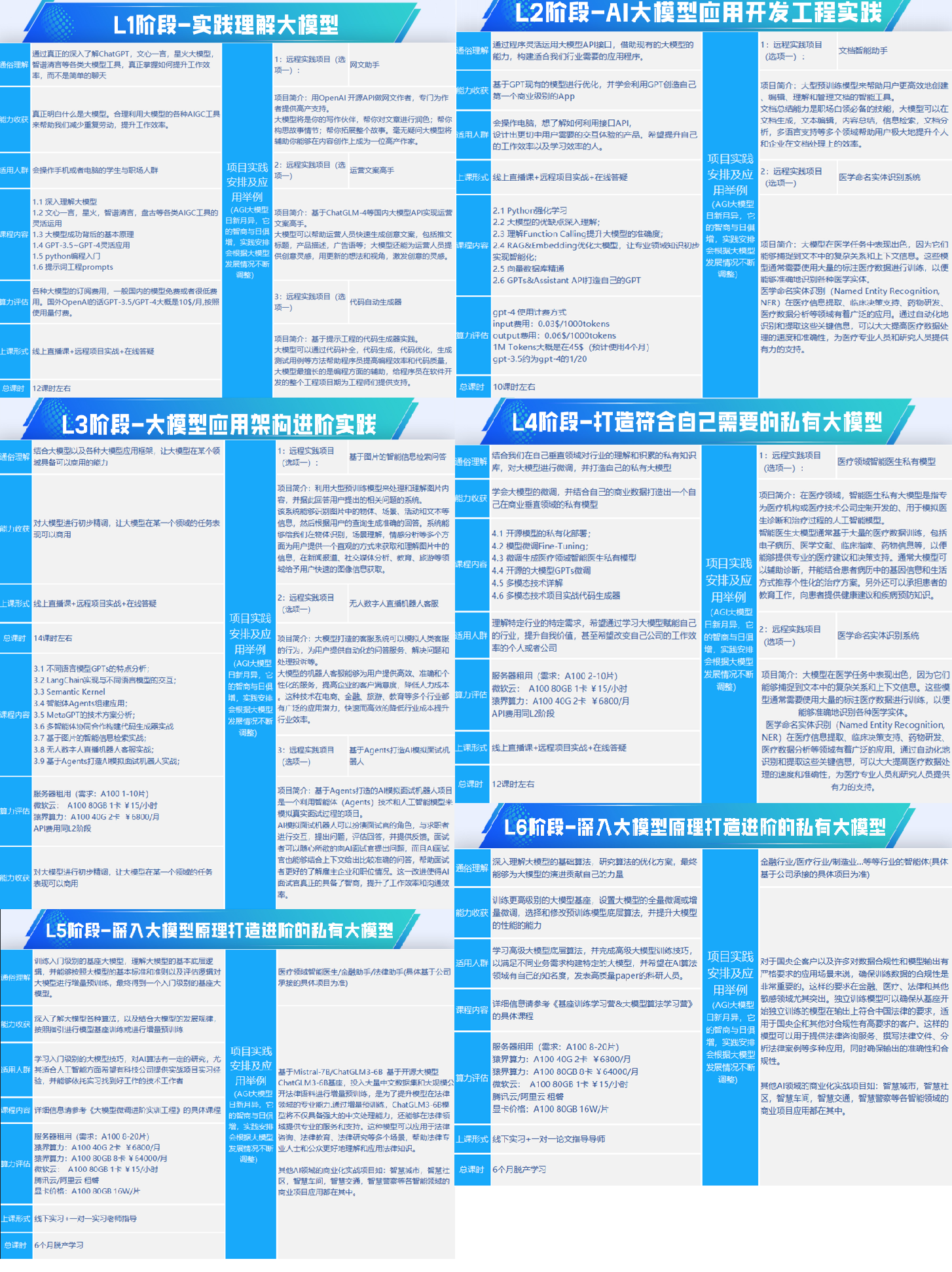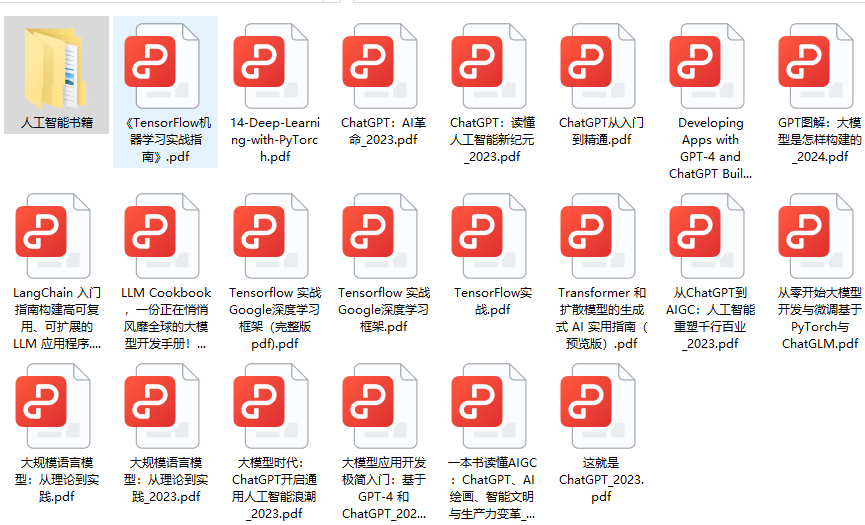动机
在许多行业中,尤其是在学术界,抄袭是一个重大问题。随着互联网和开放信息的兴起,这种现象甚至变得更加严重,任何人都可以通过点击访问特定主题的任何信息。
基于这一观察,研究人员一直在尝试使用不同的文本分析方法解决这个问题。在这篇概念文章中,我们将尝试解决抄袭检测工具的两个主要限制:(1)内容改写抄袭和(2)内容翻译抄袭。
(1) 对于传统工具来说,重新表述的内容可能很难捕捉到,因为它们没有考虑整体上下文的同义词和反义词。
(2) 使用与原文不同语言编写的内容也是一个巨大的问题,即使是最先进的基于机器学习的工具也面临着这个问题,因为上下文完全转移到了另一种语言。
在这篇概念性的博客文章中,我们将解释如何使用基于Transformer的模型以创新的方式解决这两个挑战。
首先,我们将带你了解分析方法,描述从数据收集到性能分析的整个工作流程。然后,我们将深入探讨解决方案的科学/技术实现,然后展示最终结果。
问题陈述
假设你有兴趣构建一个学术内容管理平台。你可能希望只接受在你的平台上没有共享过的文章。在这种情况下,你的目标将是拒绝所有与现有文章相似度超过某个阈值的新文章。
为了说明这种情况,我们将使用cord-19数据集,这是由Allen Institute for AI在Kaggle上免费提供的开放研究挑战数据集。
分析方法
在进一步进行分析之前,让我们从以下问题明确我们在这里试图实现的目标:
问题:我们能否在我们的数据库中找到一个或多个与新提交的文档相似(超过某个阈值)的文档?
下面的工作流程突出显示了回答这个问题所需的所有主要步骤。

让我们了解这里正在发生的事情 💡。
在收集源数据后,我们首先对内容进行预处理,然后使用BERT创建一个向量数据库。
然后,每当我们有一个新的文档进入时,我们检查语言并进行抄袭检测。更多详细信息将在文章后面给出。
科学实施
本节专注于分析方法中各个部分的技术实施。
数据预处理
我们只对源数据的摘要列感兴趣,为了简单起见,我们将仅使用100个观察结果来加快预处理的速度。
import pandas as pd
def preprocess_data(data_path, sample_size):
# Read the data from specific path
data = pd.read_csv(data_path, low_memory=False)
# Drop articles without Abstract
data = data.dropna(subset = ['abstract']).reset_index(drop = True)
# Get "sample_size" random articles
data = data.sample(sample_size)[['abstract']]
return data
# Read data & preprocess it
data_path = "./data/cord19_source_data.csv"
source_data = preprocess_data(data_path, 100)
以下是源数据集的五个随机观察结果。

文档向量化器

在引言中观察到的挑战分别导致选择以下两个基于Transformer的模型:
(1) BERT模型:用于解决第一个限制,因为它提供了文本信息更好的上下文表示。为此,我们将使用以下功能:
-
create_vector_from_text:用于生成单个文档的向量表示。
-
create_vector_database:负责创建一个数据库,其中包含每个文档的相应向量。
# Useful libraries
import numpy as np
import torch
from keras.preprocessing.sequence import pad_sequences
from transformers import BertTokenizer, AutoModelForSequenceClassification
# Load bert model
model_path = "bert-base-uncased"
tokenizer = BertTokenizer.from_pretrained(model_path,
do_lower_case=True)
model = AutoModelForSequenceClassification.from_pretrained(model_path,
output_attentions=False,
output_hidden_states=True)
def create_vector_from_text(tokenizer, model, text, MAX_LEN = 510):
input_ids = tokenizer.encode(
text,
add_special_tokens = True,
max_length = MAX_LEN,
)
results = pad_sequences([input_ids], maxlen=MAX_LEN, dtype="long",
truncating="post", padding="post")
# Remove the outer list.
input_ids = results[0]
# Create attention masks
attention_mask = [int(i>0) for i in input_ids]
# Convert to tensors.
input_ids = torch.tensor(input_ids)
attention_mask = torch.tensor(attention_mask)
# Add an extra dimension for the "batch" (even though there is only one
# input in this batch.)
input_ids = input_ids.unsqueeze(0)
attention_mask = attention_mask.unsqueeze(0)
# Put the model in "evaluation" mode, meaning feed-forward operation.
model.eval()
# Run the text through BERT, and collect all of the hidden states produced
# from all 12 layers.
with torch.no_grad():
logits, encoded_layers = model(
input_ids = input_ids,
token_type_ids = None,
attention_mask = attention_mask,
return_dict=False)
layer_i = 12 # The last BERT layer before the classifier.
batch_i = 0 # Only one input in the batch.
token_i = 0 # The first token, corresponding to [CLS]
# Extract the vector.
vector = encoded_layers[layer_i][batch_i][token_i]
# Move to the CPU and convert to numpy ndarray.
vector = vector.detach().cpu().numpy()
return(vector)
def create_vector_database(data):
# The list of all the vectors
vectors = []
# Get overall text data
source_data = data.abstract.values
# Loop over all the comment and get the embeddings
for text in tqdm(source_data):
# Get the embedding
vector = create_vector_from_text(tokenizer, model, text)
#add it to the list
vectors.append(vector)
data["vectors"] = vectors
data["vectors"] = data["vectors"].apply(lambda emb: np.array(emb))
data["vectors"] = data["vectors"].apply(lambda emb: emb.reshape(1, -1))
return data
# Create the vector database
vector_database = create_vector_database(source_data)
vector_database.sample(5)
第94行显示了向量数据库中的五个随机观察结果,包括新向量列。

(2) 使用机器翻译Transformer模型将传入文档的语言翻译为英语,因为我们的源文档是英文的。只有当文档的语言是以下五种语言之一时,才执行翻译:德语、法语、日语、希腊语和俄语。以下是使用MarianMT模型实现此逻辑的辅助函数。
from langdetect import detect, DetectorFactory
DetectorFactory.seed = 0
def translate_text(text, text_lang, target_lang='en'):
# Get the name of the model
model_name = f"Helsinki-NLP/opus-mt-{text_lang}-{target_lang}"
# Get the tokenizer
tokenizer = MarianTokenizer.from_pretrained(model_name)
# Instantiate the model
model = MarianMTModel.from_pretrained(model_name)
# Translation of the text
formated_text = ">>{}<< {}".format(text_lang, text)
translation = model.generate(**tokenizer([formated_text], return_tensors="pt", padding=True))
translated_text = [tokenizer.decode(t, skip_special_tokens=True) for t in translation][0]
return translated_text
抄袭分析器
当传入文档的向量与数据库中的某个向量在一定阈值水平上相似时,就存在抄袭。

但是,什么时候两个向量是相似的?→ 当它们具有相同的大小和方向时。
这个定义要求我们的向量具有相同的大小,这可能是一个问题,因为文档向量的维度取决于该文档的长度。幸运的是,我们有多种相似度测量方法可以用来解决这个问题,其中之一就是余弦相似度,我们将在本例中使用它。
如果你对其他方法感兴趣,可以参考James Briggs的这篇精彩内容。他解释了每种方法的工作原理、优点,并指导你如何实施它们。
抄袭分析是使用run_plagiarism_analysis函数执行的。我们首先使用check_incoming_document函数检查文档语言,必要时执行正确的翻译。
最终结果是一个包含四个主要值的字典:
-
similarity_score:传入文章与数据库中最相似的现有文章之间的得分。
-
is_plagiarism:如果相似度得分等于或超过阈值,则值为true。否则为false。
-
most_similar_article:最相似文章的文本信息。
-
article_submitted:提交审批的文章。
def process_document(text):
"""
Create a vector for given text and adjust it for cosine similarity search
"""
text_vect = create_vector_from_text(tokenizer, model, text)
text_vect = np.array(text_vect)
text_vect = text_vect.reshape(1, -1)
return text_vect
def is_plagiarism(similarity_score, plagiarism_threshold):
return similarity_score < plagiarism_threshold
def check_incoming_document(incoming_document):
text_lang = detect(incoming_document)
language_list = ['de', 'fr', 'el', 'ja', 'ru']
final_result = ""
if(text_lang == 'en'):
final_result = incoming_document
elif(text_lang not in language_list):
final_result = None
else:
# Translate in English
final_result = translate_text(incoming_document, text_lang)
return final_result
def run_plagiarism_analysis(query_text, data, plagiarism_threshold=0.8):
top_N=3
# Check the language of the query/incoming text and translate if required.
document_translation = check_incoming_document(query_text)
if(document_translation is None):
print("Only the following languages are supported: English, French, Russian, German, Greek and Japanese")
exit(-1)
else:
# Preprocess the document to get the required vector for similarity analysis
query_vect = process_document(document_translation)
# Run similarity Search
data["similarity"] = data["vectors"].apply(lambda x: cosine_similarity(query_vect, x))
data["similarity"] = data["similarity"].apply(lambda x: x[0][0])
similar_articles = data.sort_values(by='similarity', ascending=False)[1:top_N+1]
formated_result = similar_articles[["abstract", "paper_id", "similarity"]].reset_index(drop = True)
similarity_score = formated_result.iloc[0]["similarity"]
most_similar_article = formated_result.iloc[0]["abstract"]
is_plagiarism_bool = is_plagiarism(similarity_score, plagiarism_threshold)
plagiarism_decision = {'similarity_score': similarity_score,
'is_plagiarism': is_plagiarism_bool,
'most_similar_article': most_similar_article,
'article_submitted': query_text
}
return plagiarism_decision
系统实验
我们已经涵盖并实施了工作流程的所有组件。现在,是时候使用我们的系统来测试三种被系统接受的语言:德语、法语、日语、希腊语和俄语。
评估
以下是我们要检查作者是否抄袭的文章摘要文本。
英文文章
这篇文章实际上是源数据中的一个示例。
english_article_to_check = "The need for multidisciplinary research to address today's complex health and environmental challenges has never been greater. The One Health (OH) approach to research ensures that human, animal, and environmental health questions are evaluated in an integrated and holistic manner to provide a more comprehensive understanding of the problem and potential solutions than would be possible with siloed approaches. However, the OH approach is complex, and there is limited guidance available for investigators regarding the practical design and implementation of OH research. In this paper we provide a framework to guide researchers through conceptualizing and planning an OH study. We discuss key steps in designing an OH study, including conceptualization of hypotheses and study aims, identification of collaborators for a multi-disciplinary research team, study design options, data sources and collection methods, and analytical methods. We illustrate these concepts through the presentation of a case study of health impacts associated with land application of biosolids. Finally, we discuss opportunities for applying an OH approach to identify solutions to current global health issues, and the need for cross-disciplinary funding sources to foster an OH approach to research."
# Select an existing article from the database
new_incoming_text = source_data.iloc[0]['abstract']
# Run the plagiarism detection
analysis_result = run_plagiarism_analysis(new_incoming_text, vector_database, plagiarism_threshold=0.8)

运行系统后,我们得到了一个相似度得分为1,与现有文章完全匹配。这是显而易见的,因为我们从数据库中取了完全相同的文章。
法文文章
这篇文章可以从法国农业网站免费获取。
french_article_to_check = """Les Réseaux d’Innovation et de Transfert Agricole (RITA) ont été créés en 2011 pour mieux connecter la recherche et le développement agricole, intra et inter-DOM, avec un objectif d’accompagnement de la diversification des productions locales. Le CGAAER a été chargé d'analyser ce dispositif et de proposer des pistes d'action pour améliorer la chaine Recherche – Formation – Innovation – Développement – Transfert dans les outre-mer dans un contexte d'agriculture durable, au profit de l'accroissement de l'autonomie alimentaire."""
analysis_result = run_plagiarism_analysis(french_article_to_check, vector_database, plagiarism_threshold=0.8)
analysis_result

在这种情况下,没有发生抄袭,因为相似度得分低于阈值。
德文文章
假设有人非常喜欢数据库中的第五篇文章,并决定将其翻译成德语。现在让我们看看系统如何判断这篇文章。
german_article_to_check = """Derzeit ist eine Reihe strukturell und funktionell unterschiedlicher temperaturempfindlicher Elemente wie RNA-Thermometer bekannt, die eine Vielzahl biologischer Prozesse in Bakterien, einschließlich der Virulenz, steuern. Auf der Grundlage einer Computer- und thermodynamischen Analyse der vollständig sequenzierten Genome von 25 Salmonella enterica-Isolaten wurden ein Algorithmus und Kriterien für die Suche nach potenziellen RNA-Thermometern entwickelt. Er wird es ermöglichen, die Suche nach potentiellen Riboschaltern im Genom anderer gesellschaftlich wichtiger Krankheitserreger durchzuführen. Für S. enterica wurden neben dem bekannten 4U-RNA-Thermometer vier Hairpin-Loop-Strukturen identifiziert, die wahrscheinlich als weitere RNA-Thermometer fungieren. Sie erfüllen die notwendigen und hinreichenden Bedingungen für die Bildung von RNA-Thermometern und sind hochkonservative nichtkanonische Strukturen, da diese hochkonservativen Strukturen im Genom aller 25 Isolate von S. enterica gefunden wurden. Die Hairpins, die eine kreuzförmige Struktur in der supergewickelten pUC8-DNA bilden, wurden mit Hilfe der Rasterkraftmikroskopie sichtbar gemacht."""
analysis_result = run_plagiarism_analysis(german_article_to_check, vector_database, plagiarism_threshold=0.8)
analysis_result

相似度达到了97% - 模型捕捉到了这一点!结果非常令人印象深刻。这篇文章绝对是一个剽窃作品。
结论
恭喜!现在你拥有了构建更强大的抄袭检测系统所需的所有工具,使用BERT和机器翻译模型结合余弦相似度。
如何系统的去学习大模型LLM ?
作为一名热心肠的互联网老兵,我意识到有很多经验和知识值得分享给大家,也可以通过我们的能力和经验解答大家在人工智能学习中的很多困惑,所以在工作繁忙的情况下还是坚持各种整理和分享。
但苦于知识传播途径有限,很多互联网行业朋友无法获得正确的资料得到学习提升,故此将并将重要的 AI大模型资料 包括AI大模型入门学习思维导图、精品AI大模型学习书籍手册、视频教程、实战学习等录播视频免费分享出来。
😝有需要的小伙伴,可以V扫描下方二维码免费领取🆓

一、全套AGI大模型学习路线
AI大模型时代的学习之旅:从基础到前沿,掌握人工智能的核心技能!

二、640套AI大模型报告合集
这套包含640份报告的合集,涵盖了AI大模型的理论研究、技术实现、行业应用等多个方面。无论您是科研人员、工程师,还是对AI大模型感兴趣的爱好者,这套报告合集都将为您提供宝贵的信息和启示。

三、AI大模型经典PDF籍
随着人工智能技术的飞速发展,AI大模型已经成为了当今科技领域的一大热点。这些大型预训练模型,如GPT-3、BERT、XLNet等,以其强大的语言理解和生成能力,正在改变我们对人工智能的认识。 那以下这些PDF籍就是非常不错的学习资源。


四、AI大模型商业化落地方案

阶段1:AI大模型时代的基础理解
- 目标:了解AI大模型的基本概念、发展历程和核心原理。
- 内容:
- L1.1 人工智能简述与大模型起源
- L1.2 大模型与通用人工智能
- L1.3 GPT模型的发展历程
- L1.4 模型工程
- L1.4.1 知识大模型
- L1.4.2 生产大模型
- L1.4.3 模型工程方法论
- L1.4.4 模型工程实践 - L1.5 GPT应用案例
阶段2:AI大模型API应用开发工程
- 目标:掌握AI大模型API的使用和开发,以及相关的编程技能。
- 内容:
- L2.1 API接口
- L2.1.1 OpenAI API接口
- L2.1.2 Python接口接入
- L2.1.3 BOT工具类框架
- L2.1.4 代码示例 - L2.2 Prompt框架
- L2.2.1 什么是Prompt
- L2.2.2 Prompt框架应用现状
- L2.2.3 基于GPTAS的Prompt框架
- L2.2.4 Prompt框架与Thought
- L2.2.5 Prompt框架与提示词 - L2.3 流水线工程
- L2.3.1 流水线工程的概念
- L2.3.2 流水线工程的优点
- L2.3.3 流水线工程的应用 - L2.4 总结与展望
- L2.1 API接口
阶段3:AI大模型应用架构实践
- 目标:深入理解AI大模型的应用架构,并能够进行私有化部署。
- 内容:
- L3.1 Agent模型框架
- L3.1.1 Agent模型框架的设计理念
- L3.1.2 Agent模型框架的核心组件
- L3.1.3 Agent模型框架的实现细节 - L3.2 MetaGPT
- L3.2.1 MetaGPT的基本概念
- L3.2.2 MetaGPT的工作原理
- L3.2.3 MetaGPT的应用场景 - L3.3 ChatGLM
- L3.3.1 ChatGLM的特点
- L3.3.2 ChatGLM的开发环境
- L3.3.3 ChatGLM的使用示例 - L3.4 LLAMA
- L3.4.1 LLAMA的特点
- L3.4.2 LLAMA的开发环境
- L3.4.3 LLAMA的使用示例 - L3.5 其他大模型介绍
- L3.1 Agent模型框架
阶段4:AI大模型私有化部署
- 目标:掌握多种AI大模型的私有化部署,包括多模态和特定领域模型。
- 内容:
- L4.1 模型私有化部署概述
- L4.2 模型私有化部署的关键技术
- L4.3 模型私有化部署的实施步骤
- L4.4 模型私有化部署的应用场景
学习计划:
- 阶段1:1-2个月,建立AI大模型的基础知识体系。
- 阶段2:2-3个月,专注于API应用开发能力的提升。
- 阶段3:3-4个月,深入实践AI大模型的应用架构和私有化部署。
- 阶段4:4-5个月,专注于高级模型的应用和部署。
这份完整版的大模型 LLM 学习资料已经上传CSDN,朋友们如果需要可以微信扫描下方CSDN官方认证二维码免费领取【保证100%免费】
😝有需要的小伙伴,可以Vx扫描下方二维码免费领取🆓





















 2万+
2万+

 被折叠的 条评论
为什么被折叠?
被折叠的 条评论
为什么被折叠?








